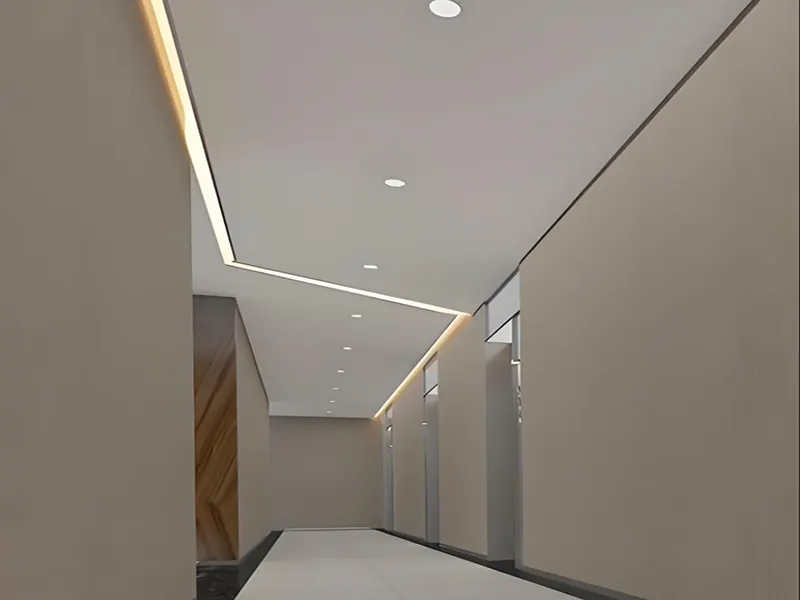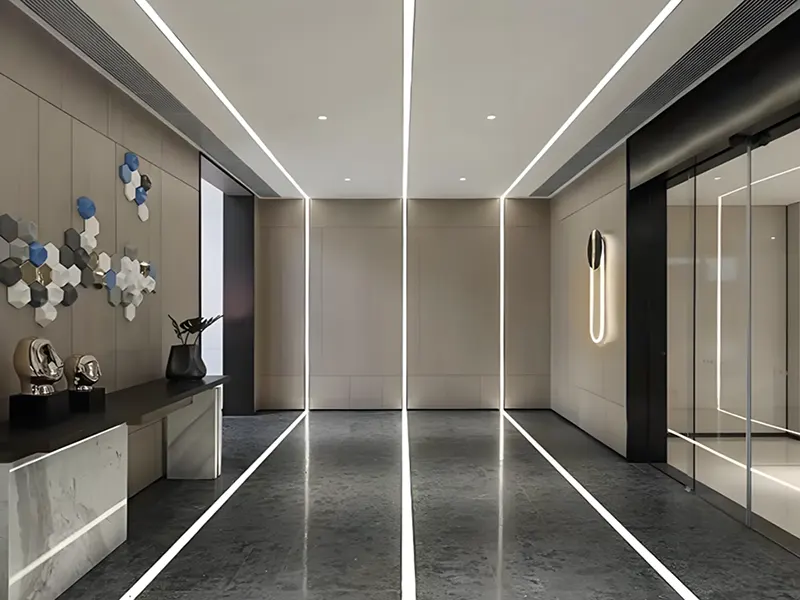LED profile aluminum is also called (LED aluminum groove), which is a lighting accessory used with LED light strips. LED aluminum profile is a professional lighting accessory widely used in decorative lighting, cabinet lights, advertising light boxes and architectural profile lighting. It not only protects the LED light strip, but also optimizes the light distribution, making the lighting effect more uniform and beautiful. However, how to correctly install the LED aluminum profile is a process that requires certain skills. Otherwise, there may be problems such as the light strip falling off, uneven aluminum joints or uneven light.
This guide will introduce the installation steps of LED profile aluminum in detail, including measurement, cutting, fixing, wiring and post-maintenance. This ensures that the LED profile will not fall off. How to install the LED profile aluminum? pls check These 6 Accessories are Needed for Installing LED Neon Flex
Measuring the Installation Area
Before choosing the right LED profile, we need to consider the size of the LED light strip. The next step is to determine the specific dimensions of the installation location, including length, width, and possible corners.
During the measurement and installation process, pay special attention to the flatness of the wall or installation surface, and record any unevenness that may affect the installation.
In addition, calculate the required power capacity based on the total power of the light strip, and ensure that the power supply location is easy to connect and meets safety regulations. At the same time, plan the direction of the wires to avoid affecting the appearance or causing safety hazards.
Cutting LED Profile Aluminum
Conventional LED aluminum profiles are usually 1 meter, 2 meters, and 3 meters. Of course, you can also customize the size, but the data must be very accurate.
Generally, the conventional size is ordered, and then the LED profile aluminum is accurately cut according to the measurement data. Use professional aluminum cutting tools, such as a cutting machine with a fine-toothed saw blade or a dedicated aluminum cutter to ensure that the cut is flat and smooth.
After cutting, the aluminum cut needs to be carefully polished. Use fine sandpaper or a grinding tool to remove burrs and sharp edges from the cut to ensure a smooth surface.
Fixing LED Profile Aluminum
Different types have different installation methods, including surface installation and hanging installation. So you have to choose the right fixing method. For wall installation, you can use special mounting clips or screws to fix.
The advantage of mounting clips is that they are easy to install and reusable, while screw fixing provides stronger fixing force and is suitable for permanent installation.
When fixing with screws, you need to punch holes in the aluminum in advance. At the same time, make sure that the hole diameter is moderate, neither too tight to cause cracking of the aluminum nor too loose to affect the fixing effect.
The spacing of the holes should be determined based on the length of the aluminium and the load-bearing requirements. It is generally recommended to set a fixing point every 30-50 cm.

Install and Connect LED Strip Lights
Place the LED strip into the aluminum groove, making sure that the strip fits flatly on the bottom of the aluminum. Tear off the adhesive backing of the LED strip, and then apply pressure evenly to make the strip fit completely.
When connecting LED strips of different sections, use a dedicated connector or welding method. The advantage of the connector is that it is easy to operate and the connection is reliable, but make sure that the specifications of the connector match the strip. Although the welding connection is relatively complicated, it will be more stable.
Pay special attention to the correctness of the polarity during the connection process. LED strips usually have clear positive and negative poles. Incorrect connection will cause the strip to not work properly and may also damage the LED chip.
Embed the LED Profile Aluminum and PC Diffuser Cover
After ensuring that the LED light strip is correctly embedded in the aluminum, we install the LED cover. The diffuser can not only evenly disperse the LED point light source, but also create a soft and continuous light effect, protecting the LED light strip from dust and external damage.

Transparent mask transmittance: 90-95%, diffuser mask transmittance: 70-80%, milky white mask transmittance: 60-65%, black mask transmittance: 30-35%. Choose a diffuser material with appropriate transmittance, depending on the required light effect and application scenario.
Pay attention to moderate force during installation to avoid deformation or cracking of the diffuser due to excessive force. For longer diffusers, it is recommended to install them step by step from one end to ensure that the entire length fits evenly.
Common Problems Encountered When Installing LED Profile Aluminum
1: The strip falling off is one of the most common problems. You need to thoroughly clean the aluminum surface before installation, choose reliable quality LED strips, and apply enough pressure after pasting to ensure a complete fit.
2: Uneven aluminum joints are another common problem. This is mostly caused by insufficient cutting accuracy or improper horizontal control during installation and fixing. If this happens, you need to measure and cut accurately again. Use professional leveling tools to ensure installation accuracy and make fine adjustments to the aluminum if necessary.
3: Another aesthetic problem is exposed wires. Common reasons include poor planning, insufficient wire troughs, or negligence during installation. Make a detailed wire routing plan before installation, prepare sufficient wire protection materials, and pay attention to the protection and hiding of wires at all times during installation.
Summary
Installing LED profile aluminum requires careful measurement, precise cutting and stable fixing to achieve the ideal lighting effect. This article details the whole process from planning to maintenance, hoping to help you install them better. If you need more information about LED profile products, please contact us.
FAQs
Not necessarily. But the basic tools are: tape measure, screwdriver, scissors, wire cutters and other common tools. You can also do it yourself.
Yes, but we do not recommend it. If the LED strip is directly attached to the wall, it will lead to poor heat dissipation, easy aging of the glue layer, and easy falling of the light strip.
Yes, no matter what the installation method is, it must be fixed with screws. Of course, this depends on the material of the installation surface. It is recommended to fix gypsum boards and wooden structures with screws, and structural glue or strong double-sided tape can be used for seamless adhesion on tiles and glass surfaces.
It is not recommended to disassemble the light strip repeatedly because the adhesive backing will weaken. If the LED light strip is broken, it needs to be replaced. The aluminum should be cleaned and a new light strip should be re-attached.
